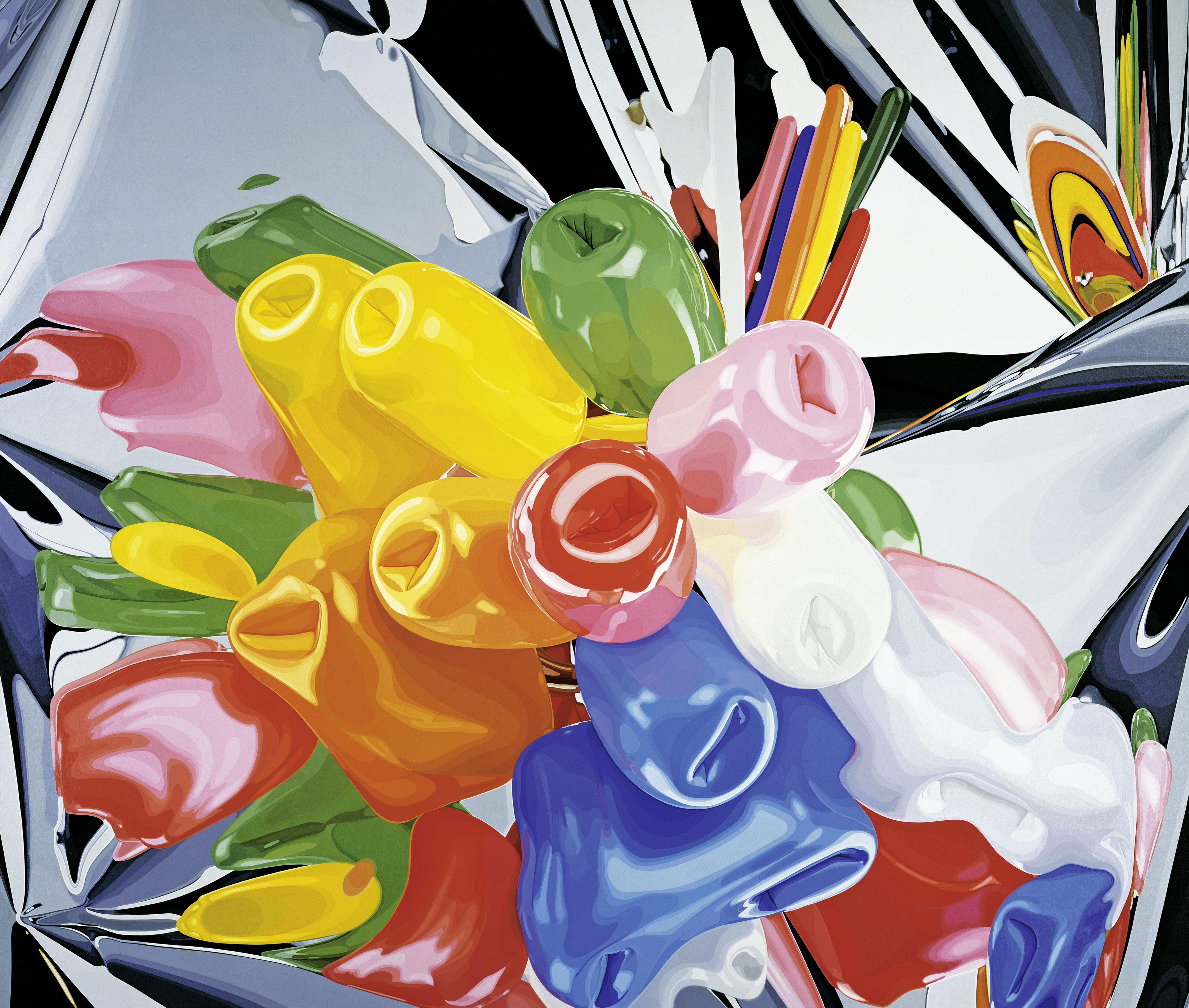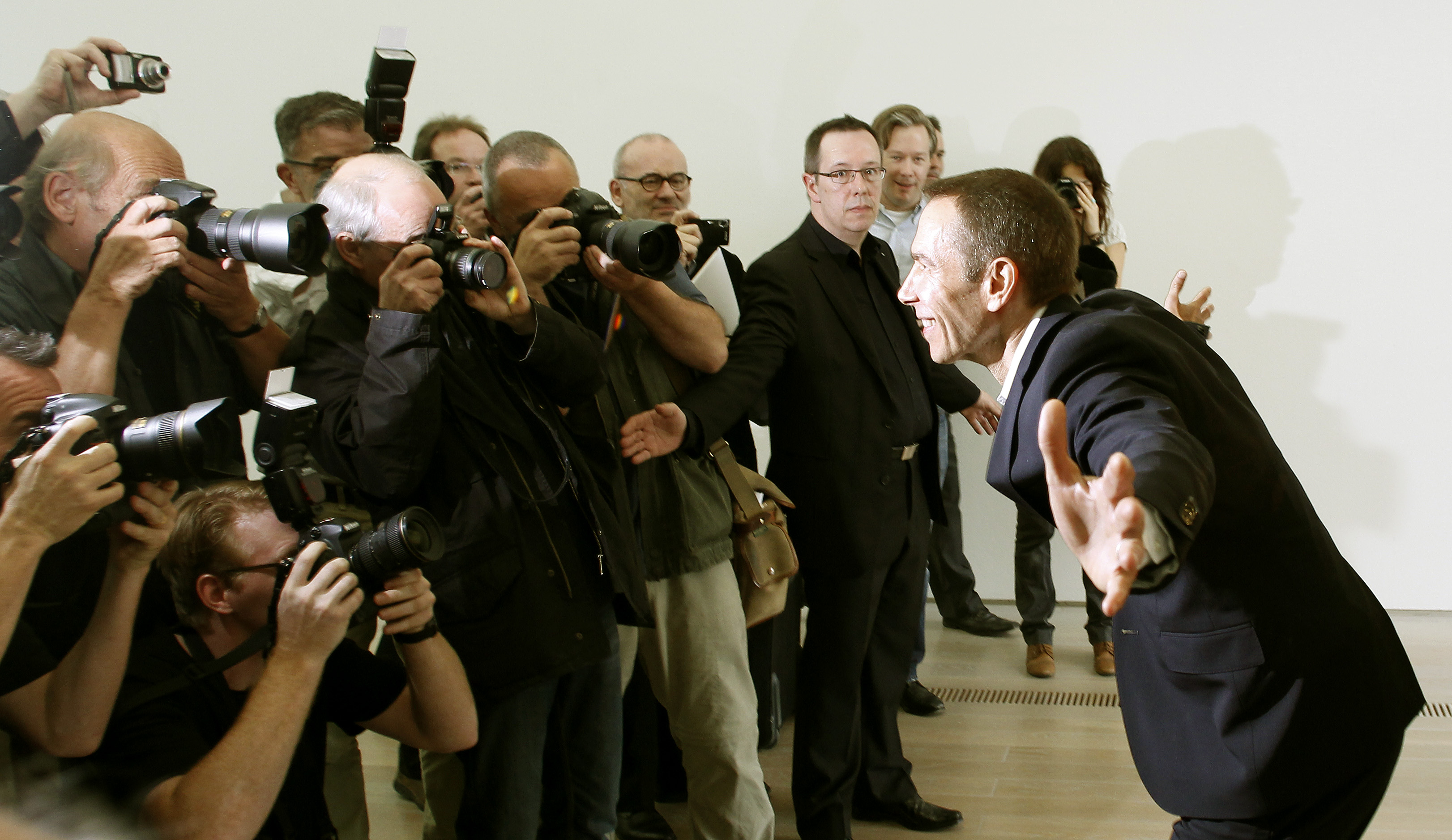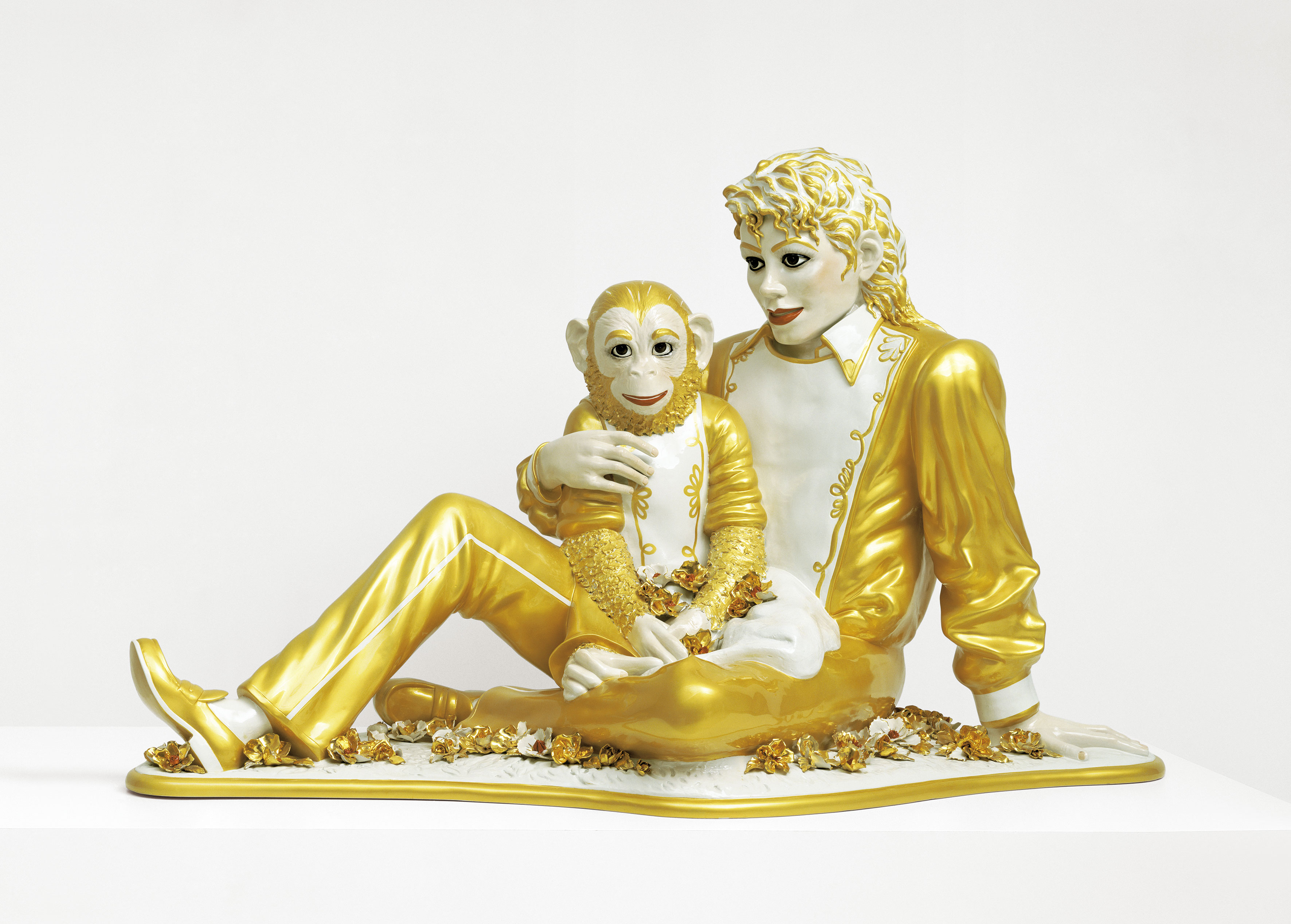Jeff Koons, the bridge between high and low art

One of the most ambitious exhibitions to date on American neo-pop artist Jeff Koons is being presented at the Beyeler Foundation near Basel, bringing together many of his most iconic pieces.
Koons is one of the best-known artists today, but he is often derided for the gaudiness of his art. To repair what it considers an injustice, the Beyeler Foundation is staging a show that is both powerful and playful.
“Jeff Koons brings great art to the general public. He is highly inventive in terms of ideas and extremely relevant as an artist,” declared Sam Keller, director of the Beyeler Foundation.
The Beyeler Foundation, Switzerland’s most-visited art museum, has succeeded in showing 50 works by Koons, which is no small feat considering that most have been loaned from private collections and many weigh several tons. The result is an exhibition where the exuberant art of Koons unfolds surprisingly well into the cool elegance of the museum’s Renzo Piano building.
Three distinct periods of the artist’s work are on display, all variations on the theme of the “ready-made” inspired by Marcel Duchamp, the French artist of urinal fame. Duchamp’s idea that art is in the eye of the beholder is central to Koons’ strategy. He says his objects require our presence “to exist as art”, and that they are there “to expand our possibilities”.
The New
The first period, entitled The New (1980-87), has never-used vacuum cleaners and carpet cleaners stacked in shiny Plexiglas boxes. Their florescent splendor casts a cool light on an angelic sepia portrait of Koons as a child, as well as a fake advertisement that runs the entire length of a wall. The artist is challenging us to look at these objects in a “new” way.
“Jeff calls these breathing machines,” explained Theodora Vischer, who co-curated the show with Keller. Capitalising on the image of sexuality that trails behind Koons since the publication of Made in Heaven, the graphic sexual pictures of the artist and his former wife, Vischer spoke of the androgynous quality of the appliances, “with their orifices and sucking power”.
Banality
The second period (1988) is entitled Banality and includes the traditionally crafted sculptures in porcelain and wood that were to earn Koons the title of the ‘king of kitsch’.
Italian and German craftsmanship worthy of a 17th century baroque church give us Michael Jackson and his monkey Bubbles, Buster Keaton on a diminutive wooden horse, teddy bears and cherubs, panthers and mermaids. Walt Disney meets 3D.
“The first thing I want to communicate to the viewer is that these objects are perfect,” Koons told swissinfo.ch. But they are also empty and can therefore serve as conduits –“transponders”. “Everything here is a metaphor for our cultural guilt and shame,” he stated obscurely, adding: “It’s about removing judgment and creating your own perfect moment.”
The Banality series launched Koons’ international career with simultaneous exhibitions in top galleries in Cologne, Chicago and New York. Critics were mystified. Many, such as the renowned Robert Hughes, remain vitriolic to this day.
Keller refutes the negative appraisals: “Jeff Koons is not kitsch. His great quality is that he overcomes the divide between popular and high culture, low and high art.” He then produced a litany of arguments in an attempt to demolish the criticisms that are repeatedly leveled at the artist.
“I ask that you really look at the work,” he pleaded. “Try to report facts and opinions, not gossip.”
Celebration
The third series, Celebration, is more consensual. It was started almost 20 years ago, after his Made in Heaven to porn star Ilona Staller, known as Cicciolina, came to an end and she disappeared in Italy with their son. The works that belong to this ongoing corpus are to remind Ludwig that his father was thinking of him.
Objects relating to childhood – balloon dogs, party hats, hearts, Easter eggs and birthday cakes – are celebrated by oversized sculptures and paintings.
Although the sculptures create an illusion of weightlessness, they are in fact made of high chromium stainless steel and can weigh several tons. Each one belongs to a series of five unique versions in different colors. The oil canvasses, most of which wouldn’t even fit through a garage door, are hyper-realistic to an uncanny degree.
There is a giddy innocence in Koons’ toy land, although the perfection of the pieces can be overwhelming. “The first thing these objects want to do is affirm your existence,” declared Koons. “That’s why I use reflective surfaces. Inside becomes outside: We are the ready-mades!”
A fine-boned man of medium height, Koons has an engaging smile and a look of wonderment and innocence. As he paraded through the show at the press opening, he was joined by his wife, Jasmine, and their five lively children, all under the age of ten.
Koons ambled through the rooms in his elegant suit, graciously stopping for the throng of photographers and striking well-rehearsed, elaborate poses. His works paled in his magnetic presence, giving the impression that the greatest thing about his art may be Koons himself.
Koons was born in Pennsylvania in 1955 and educated in Baltimore and Chicago. He lives and works in New York.
Koons has created 14 bodies of work that he has entitled: Inflatables, Pre-New, The New, Equilibrium, Luxury and Degradation, Statuary, Banality, Made in Heaven, Celebration, Easyfun, Easyfun-Ethereal, Popeye, Hulk Elvis and Antiquity.
Koons has been sued for copyright violation four times (by three photographers and the Garfield comic strip owners), losing three of the cases.
The Koons Family International Law and Policy Institute for the purpose of combating global issues of child abduction and exploitation was founded in 2007. In 2008, Koons lost his appeal to the European Court of Human Rights against Italy’s decision to give custody of his son, Ludwig, to his ex-wife, Ilona Staller.
Jeff Koons has received numerous awards in recognition of his cultural achievements. He was made Honorary Member of the Royal Academy, London in 2010 and in 2007 he was promoted from Chevalier to Officer of the French Legion of Honor. He was elected to the American Academy for Arts and Sciences in 2005.
Alongside the Beyeler Foundation show, exhibitions on Koons’ paintings and sculptures will run in Frankfurt from June to September.
A major Jeff Koons retrospective will open in January 2014 at the Museum of Contemporary Art in Los Angeles, at the Whitney Museum of American Art in June 2014 and Pompidou Center in Paris in December 2014.
“I’ve made what the Beatles would have made if they had made sculpture. Nobody ever said that the Beatles’ music was not on a high level, but it appealed to a mass audience. That’s what I want to do.” (1992)
“My works are very ‘Pop’. Each time I look at Pop Art it’s like a little explosion, very upbeat. I hope that my works, too, have that kind of rejuvenation, that each time you look at it you feel a sense of pop.” (1996)
“People don’t part so easily with their money. They think about things, especially when there are millions involved. When they acquire my work, I hope they have felt something emotionally, felt moved and invigorated and understand hopefully that there is some social value.” (May 2012)
(Source: Beyeler Foundation)

In compliance with the JTI standards
More: SWI swissinfo.ch certified by the Journalism Trust Initiative


You can find an overview of ongoing debates with our journalists here. Please join us!
If you want to start a conversation about a topic raised in this article or want to report factual errors, email us at english@swissinfo.ch.